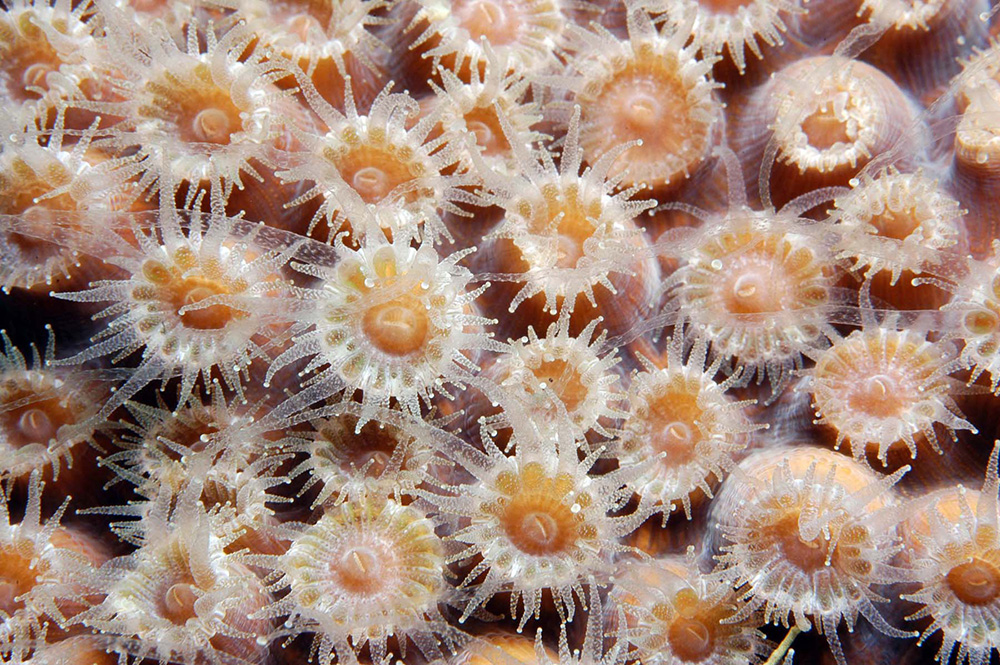|
|
You can think of a coral colony as a skeleton of rock. On the surface of that rock lives Polly, a tiny coral polyp. Polly is an animal, closely related to sea anemones. She gets some of her food by catching small plants and animals that float by over the reef, but mostly she grows her own food. Her body is basically transparent, but she has thousands of microscopic plant cells growing beneath her skin. Inside Polly, these plants (algae), called zooxanthellae (zo-zan-THEL-ay), get a safe place to live and the nutrition they need to grow. Most of Polly's energy (food) comes from the zooxanthellae, and they also help her build the rocky home where she lives. It is a classic example of a mutualistic symbiosis -- both the zooxanthellae and Polly benefit from their cooperation. Polly is just one tiny polyp, and most coral colonies have many thousands of polyps covering the surface. Each square meter of coral surface may have more than 10,000 polyps (more than 1,000 per square foot). A healthy coral reef can have tens of thousands of coral colonies in each square kilometer of reef. So when we talk about a coral reef, think about Polly and millions of her polyp cousins. They have attached to submerged rocks or other hard surfaces along the edges of islands or continents, in tropical and subtropical waters, and have grown and expanded into a field of coral colonies that help form a coral reef. To learn much more about corals and coral reefs, visit the Corals Tutorial produced by NOAA's National Ocean Service.
|
||||||||||||
|
|
|||||||||||||
